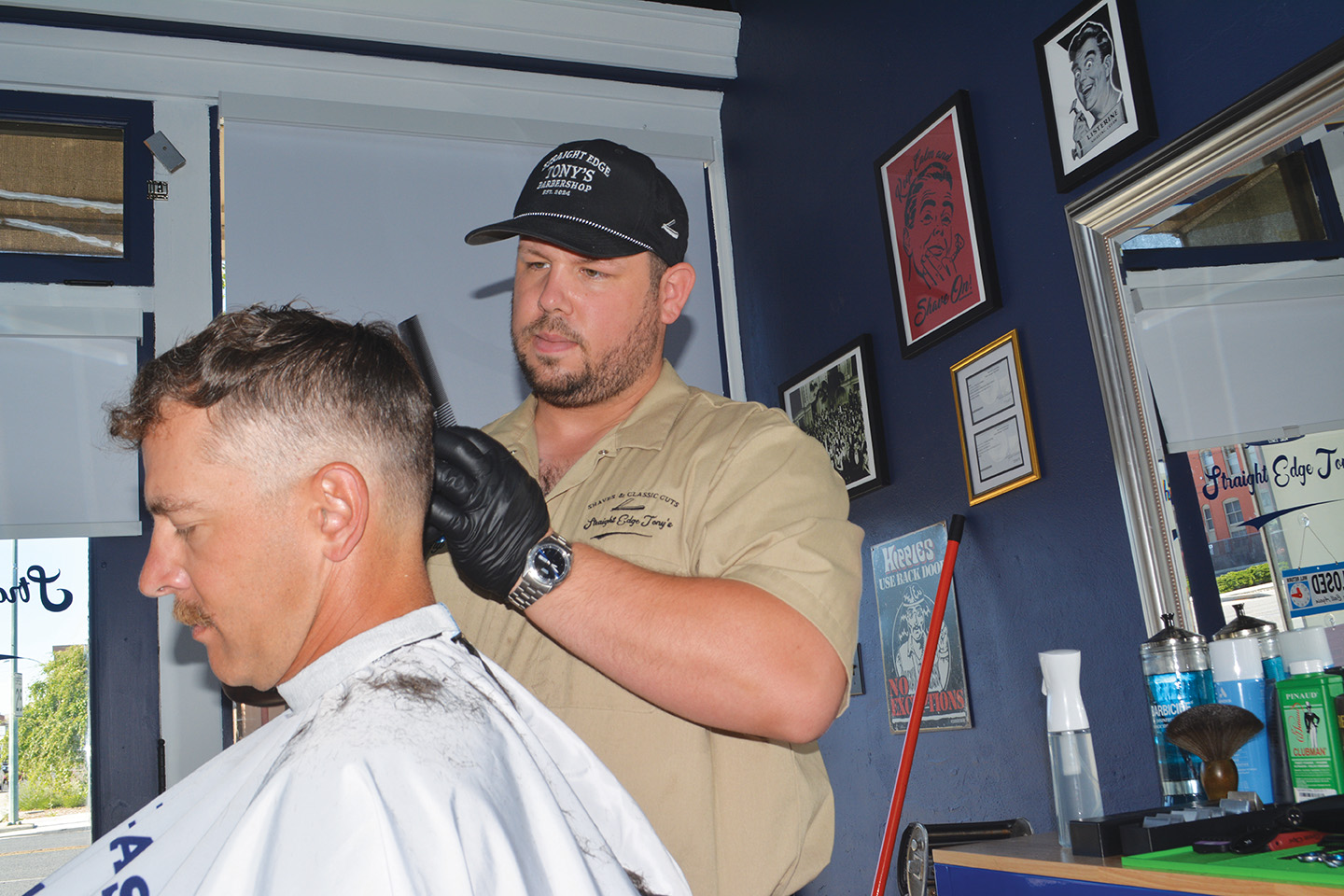Schools, hospital weather COVID surge
Published 3:00 pm Wednesday, January 12, 2022

- Lynn
The surge in COVID-19 cases spawned by the highly contagious omicron variant accelerated this week in Oregon and in Baker County, but some experts predict that infections could soon start dropping rapidly in the U.S.
Baker County reported 30 cases on Tuesday, Jan. 11.
That’s the second-highest one-day total during the pandemic. The record is 37 cases. That was the total on two days, Sept. 9 and Sept. 14, during the wave of cases driven by the delta variant.
For the first 11 days of January, the county reported 161 cases, an average of 14.6 per day.
That’s the highest daily average since September, which set a record with 15.5 cases per day (465 for the month).
January’s count through 11 days exceeds the monthly totals for December (106) and November (143) and is close to October’s total of 168.
The percentage of tests in the county that are positive rose to 20.6% for the most recent week measured, Jan. 2-8. The positivity rate for the previous three weeks ranged from 10.1% to 10.5%.
Baker County’s rate for Jan. 2-8 was slightly below the Oregon average, at 21.6%.
Baker County’s test positivity rate was also below that of most other counties in the region.
Umatilla County had a rate of 26.9%, Union County 21.6%, Wallowa County 22.1%, Malheur County 23.8%, Morrow County 37.3% and Grant County 11.8%.
The Oregon Health Authority on Jan. 11 reported Baker County’s 38th COVID-19-related death. A 65-year-old woman who tested positive on Sept. 3 died Dec. 31 at her residence. The presence of underlying conditions is being confirmed, according to OHA.
As case counts are rising, scientists studying the trends see evidence that omicron, because it’s so easily spread, likely will have a much shorter surge than previous, less infectious variants.
“It’s going to come down as fast as it went up,” Ali Mokdad, a professor of health metrics sciences at the University of Washington in Seattle, told The Associated Press this week.
The University of Washington’s model projects that the number of daily reported cases in the U.S. will crest at 1.2 million by Jan. 19 and will then fall sharply “simply because everybody who could be infected will be infected,” according to Mokdad.
In fact, he said, by the university’s complex calculations, the true number of new daily infections in the U.S. — an estimate that includes people who were never tested — has already peaked, hitting 6 million on Jan. 6.
In South Africa, where omicron was identified, and in Britain, cases have declined significantly after the same major increase that has happened in the U.S. the past couple weeks.
The Associated Press reported that in Britain, new COVID-19 cases dropped to about 140,000 a day in the past week, after skyrocketing to more than 200,000 a day earlier this month, according to government data.
Numbers from the U.K.’s National Health Service this week show coronavirus hospital admissions for adults have begun to fall, with infections dropping in all age groups.
Baker schools
Although absentee rates among students have been well above average this week, schools have continued to operate despite staffing shortages in some areas, Superintendent Mark Witty said Wednesday afternoon, Jan. 12.
“It’s certainly not business as usual,” he said.
The absentee rates for Jan. 12:
• Baker Middle School, South Baker Intermediate and Keating Elementary: 21%
• Baker High School: 19%
• Brooklyn Primary: 13%
• Haines: 12%
Those are high percentages, Witty said, but he also sees the numbers as potentially positive. They suggest that students and parents are heeding the district’s advice to stay home if they feel ill — regardless of whether the symptoms are consistent with COVID-19 or whether or not they have been tested.
“We just can’t have students and staff at school at this time if they’re sick,” Witty said.
As for staffing, the number of employees who were not working on Jan. 12:
• Brooklyn Primary: 6
• South Baker Intermediate: 4
• Baker Early Learning Center: 4
• Baker High School: 3
• Baker Middle School: 3
• Haines Elementary: 2
Witty said some of the staff are out to due COVID-19, but not all. He didn’t have specific numbers.
In classrooms, Witty said the district has been able to fill in for missing teachers with either substitutes or, in some cases, principals.
The bigger concern now, he said, is with the cafeteria staff.
If the district temporarily loses one or more additional staff in that area, Witty said it might be necessary to make changes, such as potentially doing all the cooking at one site.
No bus drivers were out as of Jan. 11, but Witty pointed out that the district has few substitute drivers, and filling vacancies on bus routes is difficult because drivers are required to have a commercial driver’s license and a certain level of training.
Witty said the omicron surge poses a challenge to the district, but the goal remains to keep students in classrooms.
He lauded district employees who have filled in as needed since classes resumed Jan. 3 following Christmas break.
“I’ve got to take my hat off to all the employees who have stepped up and taken on different roles so we can stay with in-person school,” Witty said.
Saint Alphonsus Medical Center-Baker City
Baker County’s large increase in test positivity rates for the virus — from 10.5% for the week Dec. 26-Jan. 1, to 20.6% the following week — has thus far not resulted in a similarly large increase in the number of COVID-19 patients at the Baker City hospital, said Priscilla Lynn, president and chief nursing officer for the Baker City hospital.
“We’re still managing care for the patients who are here,” Lynn said on Wednesday, Jan. 12.
As was the case during the delta surge in September, the Baker City hospital is transferring COVID-19 patients who need critical care to Saint Alphonsus hospitals in Boise or Nampa, Lynn said.
She said that so far during the current surge, the Baker City hospital has admitted fewer patients for COVID-19 treatment than during the September surge. She didn’t have specific numbers.
Lynn said there have been more people recently, however, coming to the hospital to be tested.
She said the hospital has had staff out due to COVID-19, but so far other employees have been able to cover those absences.
With a small hospital, however, losing even a few workers can potentially affect its ability to continue operating normally, she said.
Lynn said she’s optimistic that trends seen in other countries where omicron started spreading earlier — a relatively short, but significant, surge in infections but with generally milder symptoms on average — will repeat in Oregon and in Baker County.
“We are getting through what we hope is a quick surge,” she said.
“We are getting through what we hope is a quick surge.”
— Priscilla Lynn, Saint Alphonsus Medical Center-Baker City









